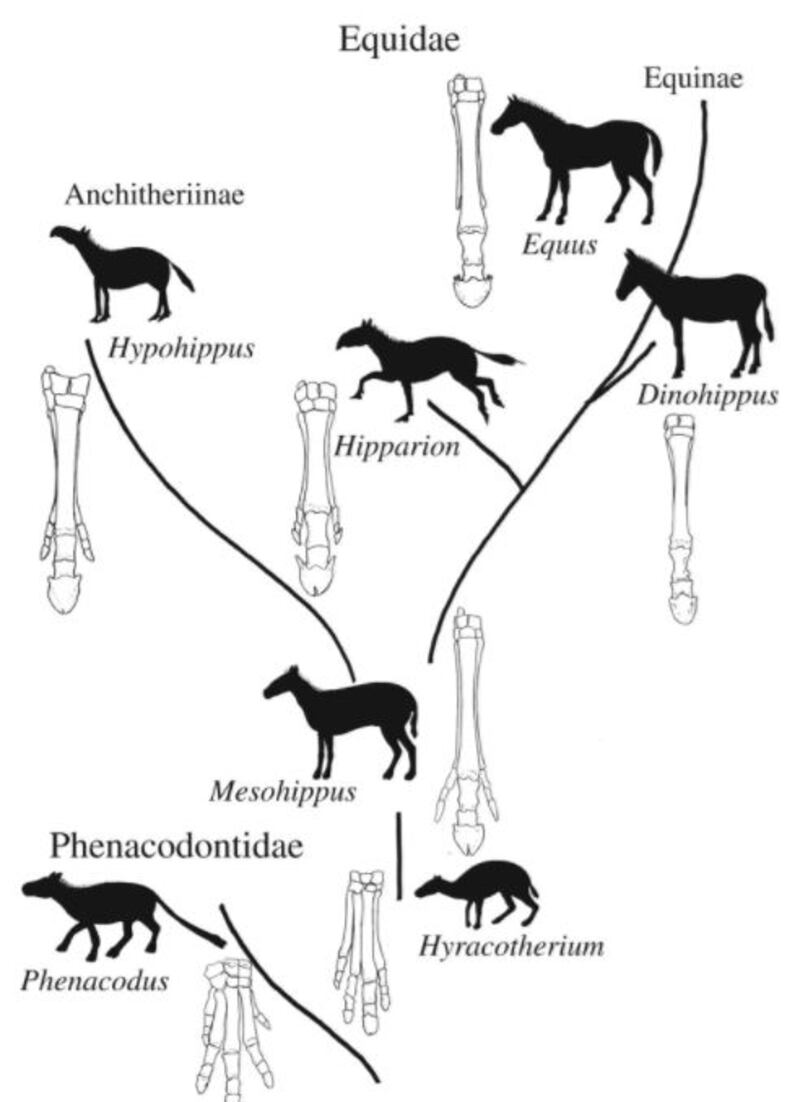Five “toes” are partially present in the forelimb of today’s horses, say researchers.
The evolutionary development of the horse’s hoof is the fastest shedding of toes in any mammal. Millions of years ago, horses had five digits at the end of each leg, but over time, these digits have disappeared.
However, a study released on Wednesday in the journal Royal Society Open Science revealed that the four digits that “disappeared” have left remnants behind.
To conduct the study, researchers from the New York Institute of Technology College of Osteopathic Medicine studied two modern horse embryos, as well as a four-toed tetradactyl (Hyracotherium), three-toed tridactyl (Mesohippus) and a monodactyl (Dinohippus).
They found that the late-term embryos had developed digit-like lumps which form into a hoof. They also found bundles of nerves to support their five-toe theory.

“If today’s horse does indeed have one digit per forelimb, we would expect each forelimb to have a total of two veins, two arteries, and two nerve bundles,” said Melinda Danowitz. “However, our dissections found between five and seven neurovascular bundles per forelimb, suggesting that additional toes begin to develop, but do not become fully differentiated.”
“Interestingly, we not only find hints of the missing digits on the modern horse, but also its ancestors, such as Hipparion and Mesohippus, two species believed to have three toes,” said lead researcher Dr Nikos Solounias.
Harvard University released a study in August which may help to explain why horses ended up being the only living monodactyl animal.
Their research showed dual pressures of increasing body weight and shrinking side toes prompted early horses’ middle toes to become dramatically stronger and better able to resist forces.
“As body mass increased, and side toes shrunk, the middle digit compensated by changing its internal geometry, allowing ever-bigger horse species to eventually stand and move on one toe,” Assistant Professor Stephanie Pierce of the Department of Organismic and Evolutionary Biology said.
“The bone within the load-bearing digit of later horses was distributed farther away from the centre of its cross-section, allowing it to better resist bending. The total amount of bone also increased, allowing it to better resist compression as well as bending, which are of critical importance for animals with large body sizes.”








